Contents
Contents
If you’re a school teacher, or want to help your child with their homework, you’ve come to the right place.
Below, we’ve provided a summary of the American Revolution, written in simple language that’s easy to understand.
Lower on the page, we’ve also provided some further useful resources to help children learn about the Revolutionary War.
Summary of the Revolutionary War
Leadup to the war & causes
In the 1700s, Great Britain had a number of settlements in America, known as the Thirteen Colonies.
In the middle of the 1700s, there was a lot of fighting going on in the colonies. The French also had settlements in America, and they fought with the British for different parts of the continent. This led to the French and Indian War from 1754-63, where the French fought the British for control of their colonies. Different Native American tribes also fought on either side.
The British won the war, but the fighting cost them a lot of money. It was very expensive to supply their army from the other side of the Atlantic Ocean.
The Stamp Act
To raise money, the British implemented new taxes on the Thirteen Colonies, beginning with the Stamp Act in 1765.
The Stamp Act stated that everything from newspapers to playing cards had to be printed on special, expensive British paper.
The people living in the Thirteen Colonies were outraged by the Stamp Act. There were widespread protests, and people adopted the slogan “no taxation without representation”.
When British people paid tax, they could vote for who would represent them in government, giving them a say in how the tax money would be spent. However, people living in the Thirteen Colonies could not vote in elections. They had no representatives in British parliament, meaning they could not decide how the money raised by the tax would be spent, which they considered extremely unfair.
Further protests
The British decided to get rid of the Stamp Act in 1766, because it was so unpopular. However, they did not stop trying to put new taxes and other restrictions on the colonists, which made them very angry.
- In 1767, the British imposed the Townshend Acts, introducing new taxes on a wide range of items, such as glass, and tea. In response, the Americans tried to avoid buying these items from the British, where possible, and they also continued protesting.
- In 1770, the Boston Massacre occurred. British soldiers killed five civilians in Boston, after an angry mob formed and began attacking them. This led to increased hostility towards the British.
- In May 1773, the British government implemented the Tea Act, which gave a British company (the East India Company) the right to sell tea directly to the Thirteen Colonies. This meant that American traders could no longer make money by buying and selling tea in the colonies.
- In December 1773, the Boston Tea Party happened. A group of rebels boarded an East India Company ship, and dumped more than a million dollars worth of tea into Boston Harbor, destroying the shipment.
- In 1774, the Intolerable Acts were put in place by the British, to punish the Americans for the Boston Tea Party. The Intolerable Acts were a group of laws that did numerous things to upset the Americans, such as closing Boston Harbor, which prevented them from buying/selling different items.
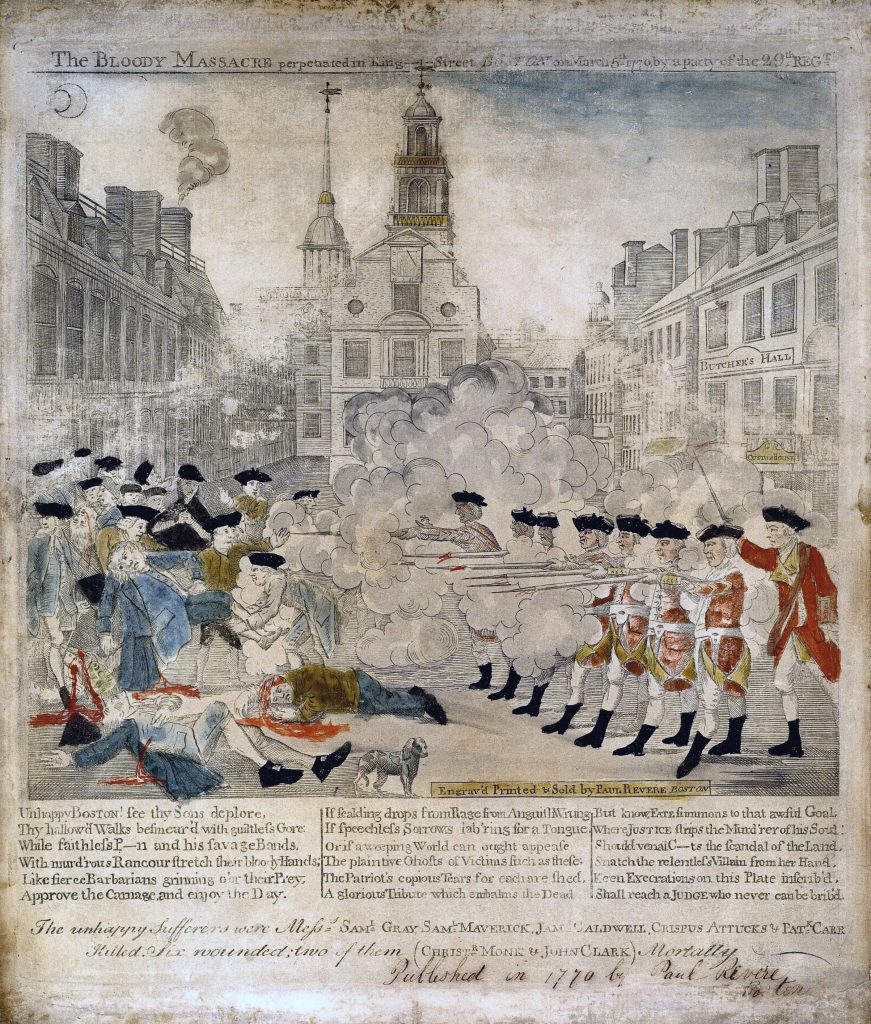
It is important to remember, most people living in the Thirteen Colonies still considered themselves British in the mid-1700s. Most people did not want to protest against the British government, but felt that they had to because of how unfairly they were being treated.
These people that were still loyal to the British were called “Loyalists”. On the other hand, people who supported protesting and fighting against the British were called “Patriots”.
Representatives from 12 of the Thirteen Colonies met at the First Continental Congress in September 1774, to discuss how they should respond to the actions of Great Britain. Loyalists and Patriots discussed their opinions on the best course of action to take.
In the end, it was decided to petition King George III, the British king at the time, to express the colonists’ unhappiness, and to suggest a way to negotiate an end to the hostilities. However, the king decided not to read their petition, leading to increased tension in the colonies.
War breaks out
In early 1775, there was increasing militarization in the Thirteen Colonies. The Patriots were forming groups of armed men, and the British Army was increasing its numbers in America.
On April 19, 1775, war broke out with the Battles of Lexington and Concord, in Massachusetts. The first gunshot of the war is known as the “shot heard round the world” but it is unknown who fired first.
The Patriots won the Battles of Lexington and Concord, driving the British troops back to Boston.
Creation of the Continental Army
After the war began, the Americans knew that they had to become more organized.
At Lexington and Concord, they fought as a series of rag-tag militias, without an official uniform, and without official training. Many soldiers were ordinary men who volunteered to fight, due to their belief in the Patriot cause.
In June 1775, the Continental Army was officially created, and George Washington was appointed its Commander-in-Chief.
Soon after, the Americans fought the British at the Battle of Bunker Hill on June 17 1775, before the Continental Army could be officially organized. The local forces lost the battle, but the British faced high casualties, providing a morale boost to the Americans, and showing that they were a serious threat.
Declaration of Independence
On July 4, 1776, Congress adopted the Declaration of Independence, officially announcing the Thirteen Colonies’ separation from Great Britain.
56 delegates to the Congress signed the Declaration, including Benjamin Franklin, John Hancock, and Thomas Jefferson. These men became known as the Founding Fathers of the United States.
At the time, the British considered this an act of treason, most likely punishable by death. The 56 delegates knew that they were taking a big risk, but they thought that it was worth it for the independence of their nation.
Washington crosses the Delaware
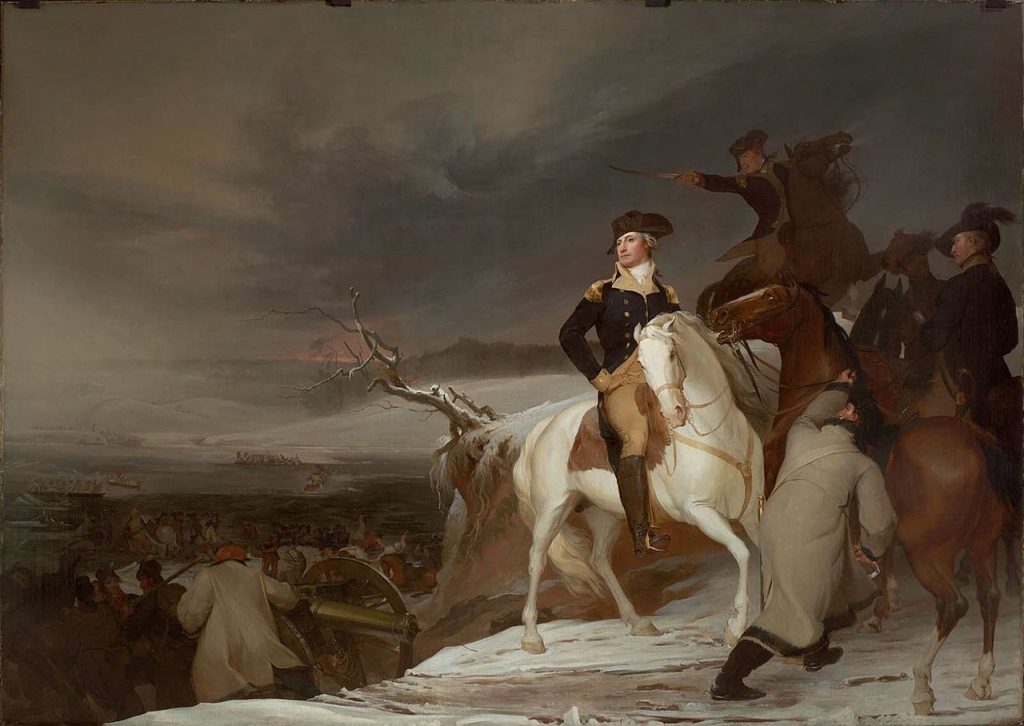
1776 was a tough year for the Continental Army.
They faced several defeats, including losing control of New York and Long Island. Coming up to the end of the year, many soldiers’ enlistments were about to expire, and it was expected that many would leave the Army, due to how difficult their situation was.
Washington knew that he had to take control of the situation. On the night of December 25-26 1776, he decided to attempt a daring crossing of the icy Delaware River, allowing him to launch a surprise attack on Hessian troops (German forces hired by the British) at Trenton.
The mission was a success, and the Continental Army won the Battle of Trenton, giving them a much-needed morale boost.
Battle of Saratoga
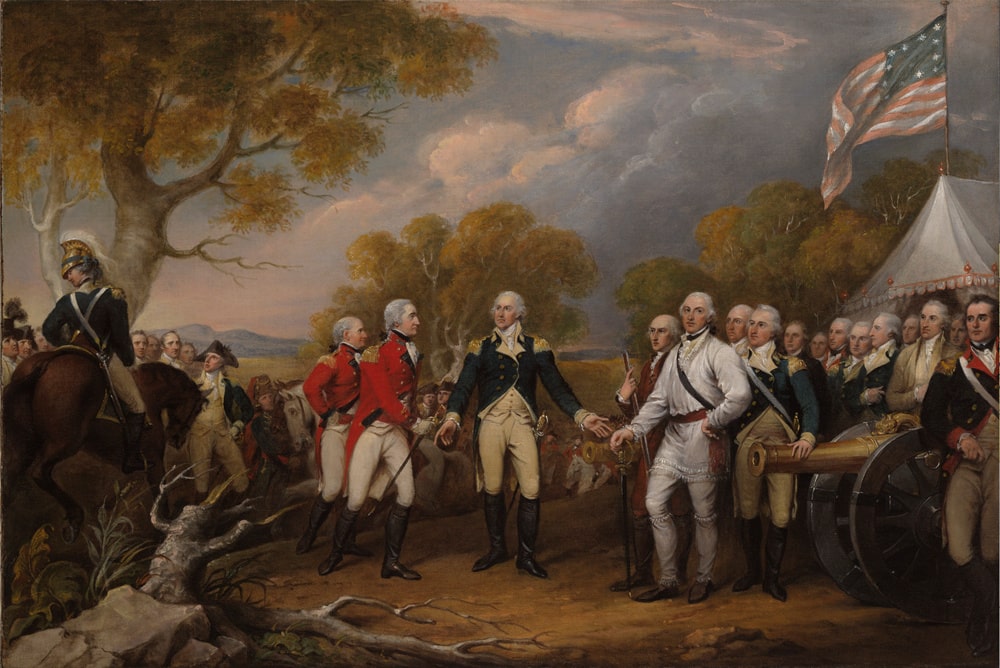
The Battle of Saratoga, which occurred in September and October 1777 in upstate New York, was a huge turning point for the Continental Army.
The battle actually spanned two different fights. The first, at Freeman’s Farm on September 19, the Americans lost, but inflicted heavy casualties on the British. The second, at Bemis Heights on October 7, the Americans won, with the help of significant reinforcements.
On October 17, British General John Burgoyne surrendered his entire army of more than 5,000 men to the Americans.
The Battle of Saratoga is credited with convincing the French to officially join the war on the American side, making the victory even more significant for Washington’s men.
Valley Forge
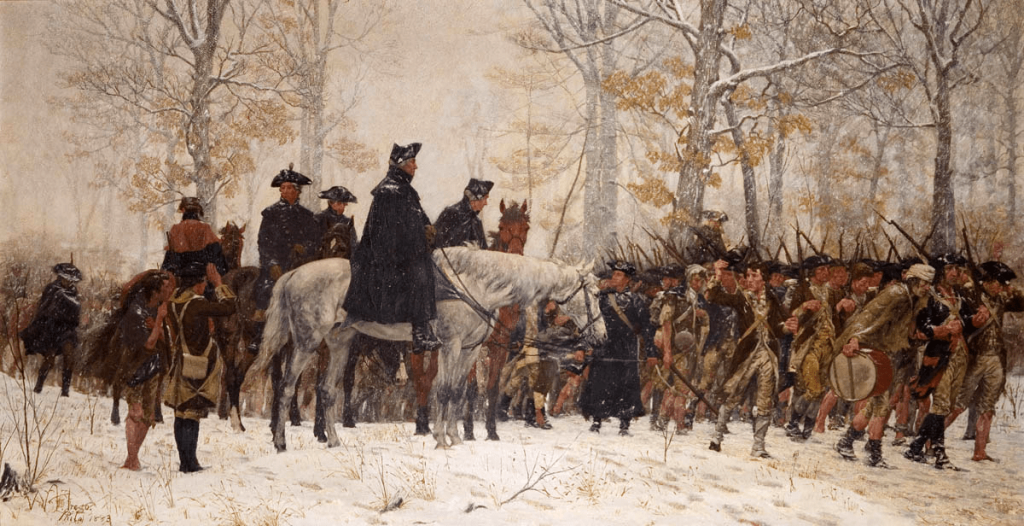
During the Revolutionary War, it was common for both sides to set up camp and stop fighting in the winter, due to the extreme cold. This was why Washington’s surprise crossing of the Delaware River in freezing conditions was so successful.
In the winter of 1777-78, George Washington decided to set up camp in Valley Forge, Pennsylvania. However, his men were running low on supplies, including food and blankets.
The winter at Valley Forge proved to be one of the toughest moments for the Continental Army. Due to the extreme cold, hunger, and disease, it is estimated that more than 2,000 people died there during the winter, a devastating loss for the Patriots.
Once the weather warmed up, Washington took action to re-energize his troops, and ensure they were prepared for the year ahead. He brought in General Baron von Steuben from Germany to run special training camps, and make the Continental Army more disciplined.
Washington’s forces were tested immediately, fighting at the Battle of Monmouth on June 28, 1778. The result was inconclusive, but the Continental Army put up a good showing, demonstrating the effectiveness of von Steuben’s training.
End of the war
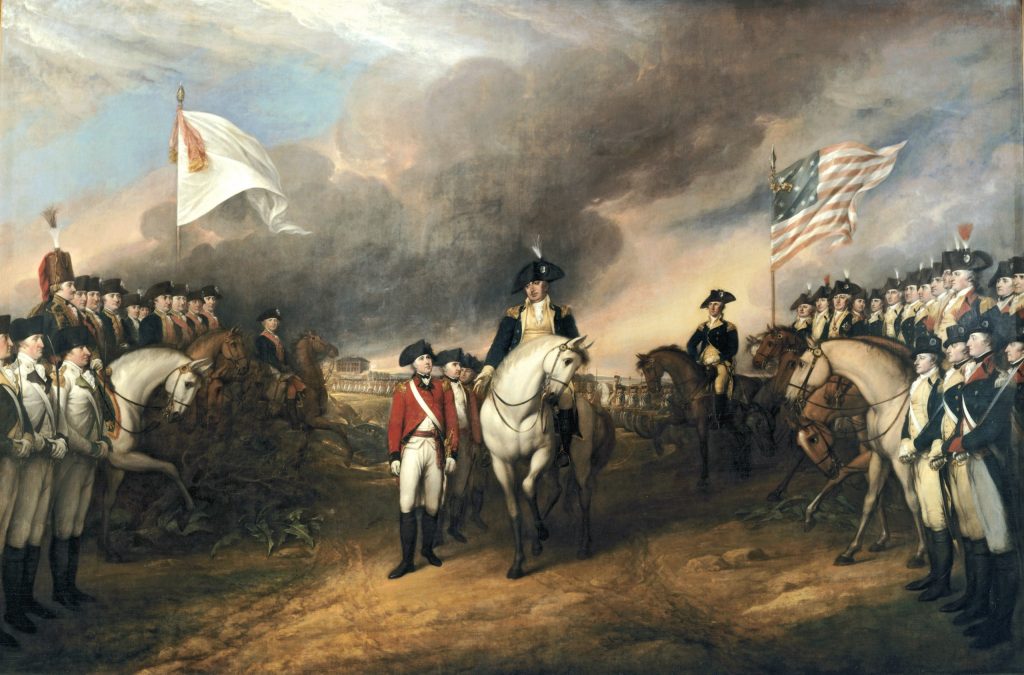
After suffering a series of defeats, the British retreated to Yorktown, Virginia in August 1781, and set up camp there.
The Americans soon arrived, and with the help of the French, they besieged Yorktown, isolating the British. They implemented a complete naval blockade, preventing any supplies from reaching the town.
Eventually, on October 19, 1781, British General Charles Cornwallis surrendered, after being overwhelmed by the combined American and French forces.
This marked the end of the final battle of the American Revolution.
On September 3, 1783, the Paris Peace Treaty was signed by the British and the Americans, officially ending the Revolutionary War.
Consequences
As a result of the American Revolution, different groups of people were affected in different ways.
- The United States gained a large amount of land from Great Britain. The government began settling on this land, opening up new places for people to live and work. Some people in the United States gained the ability to vote in elections, or run for office. However, many groups of people, such as women, were still not allowed to participate in politics.
- Native Americans often lived on these lands that the British handed over to the United States. Many were forced out of their villages as the settlers moved in, suffering the destruction of their settlements, livelihoods, and culture.
- Losing the war was very expensive for Great Britain. The war was costly to fight, and they lost the Thirteen Colonies, resulting in them missing out on significant amounts of revenue. The loss forced them to turn their focus to other parts of the world, such as India, to expand the British Empire.
- Loyalists who supported Great Britain during the war faced the threat of violence. Many had to flee to Canada or the United States.
- Some African Americans were given their freedom at the end of the war, especially those who fought in the war. Soon after the war ended, slavery was made illegal in some states. However, other African Americans remained as slaves in the southern states, where slavery was still legal until the end of the Civil War.
Further learning resources
To learn more about the Revolutionary War, use the web links below to access child-friendly resources.
Alternatively, use the search icon at the top of your screen to find more specific resources about the American Revolution.

